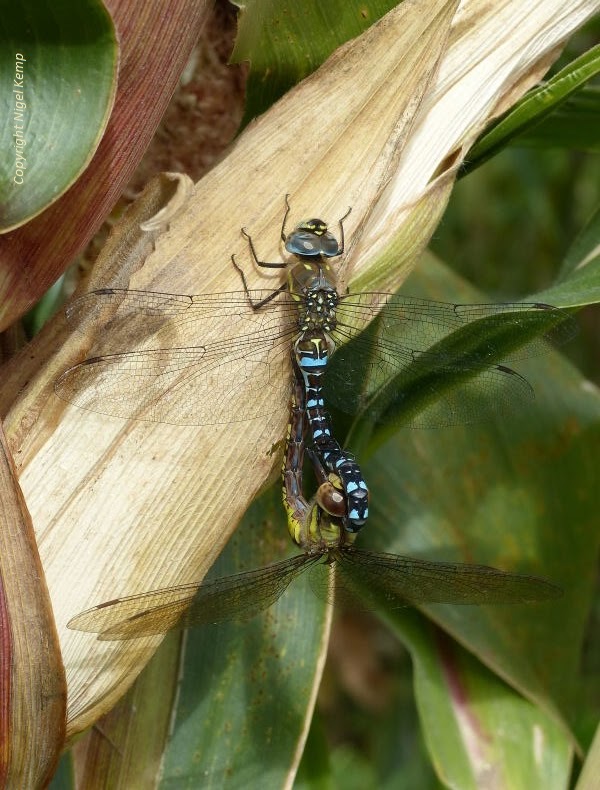More often than not, the Wall (Lasiommata megera) manages to fit in three broods in a year. They have been on the wing for over a week on the downs but today, I saw three third brood individuals flying on Pevensey Levels.
Wall (Lasiommata megera) (female)
Wall (L.megera) (male)
The predominant species of dragonfly on the wing at this time of year is the Migrant Hawker (Aeshna mixta). In good years, they can be seen in their hundreds and they are quite easy to approach when at rest.
Migrant Hawker (Aeshna mixta) (male)
Migrant Hawker (A.mixta) (mating)
On Friday, I saw several Fen Raft Spiders (Dolomedes plantarius) basking in the afternoon sunshine, including this female closely tending her egg sac. Today, I found her in the same place but now standing guard over her spiderlings within the nursery web. In the photograph, her right hind leg maintains contact with the web and you can just see the egg sac amongst the spiderlings.
Fen Raft Spider (Dolomedes plantarius) (female with egg sac)
Fen Raft Spider (D.plantarius) (female guarding nursery web)














